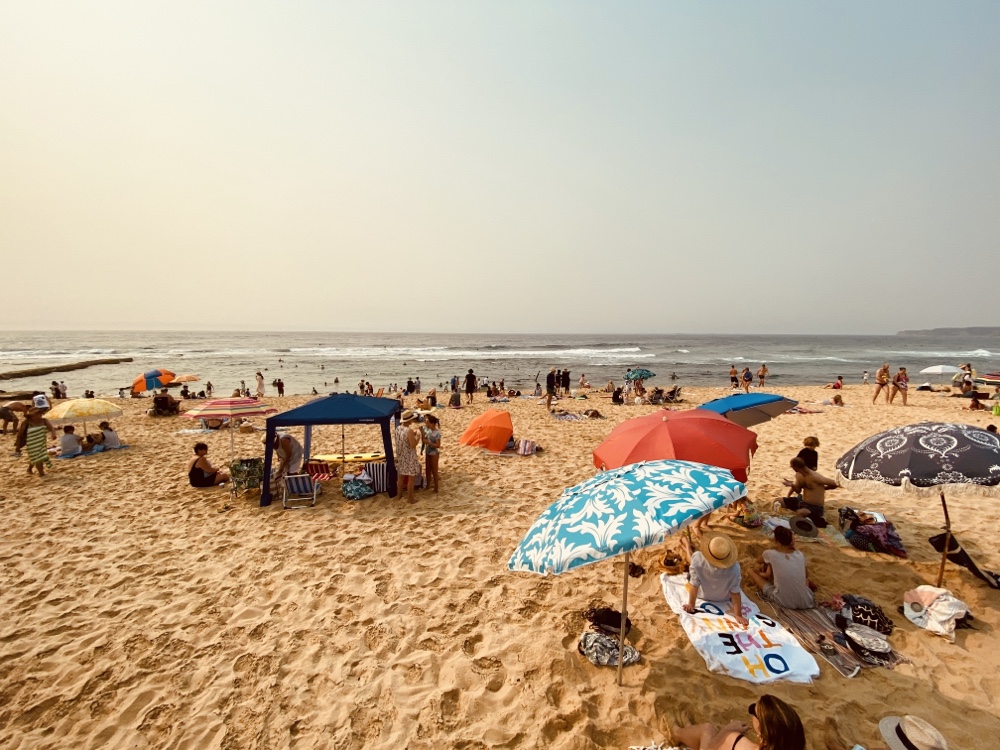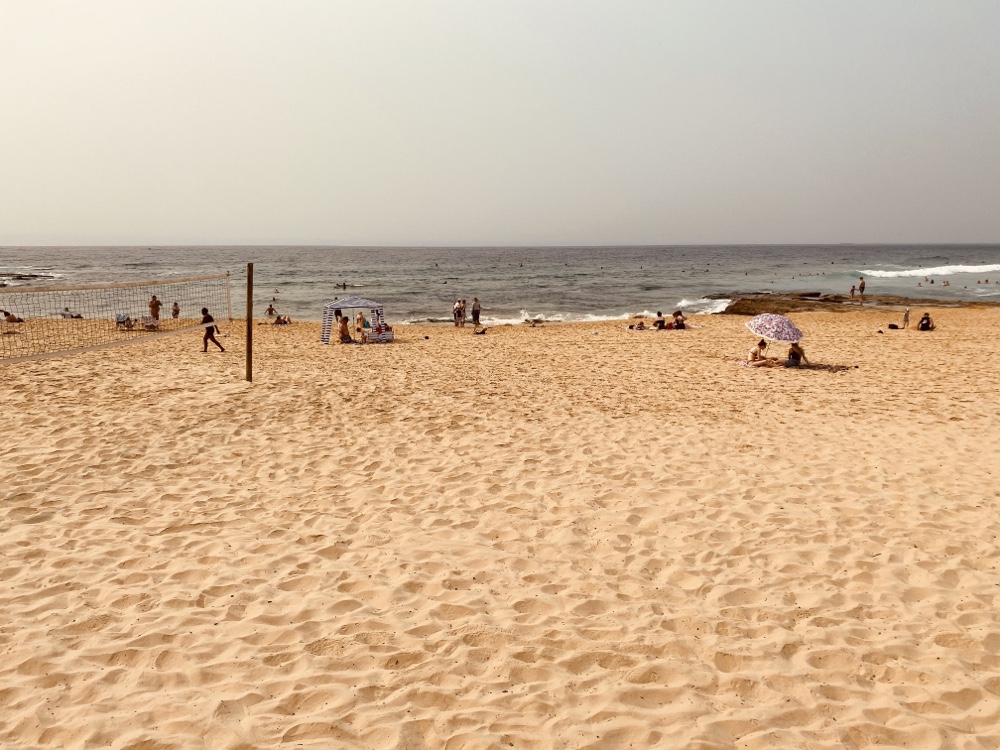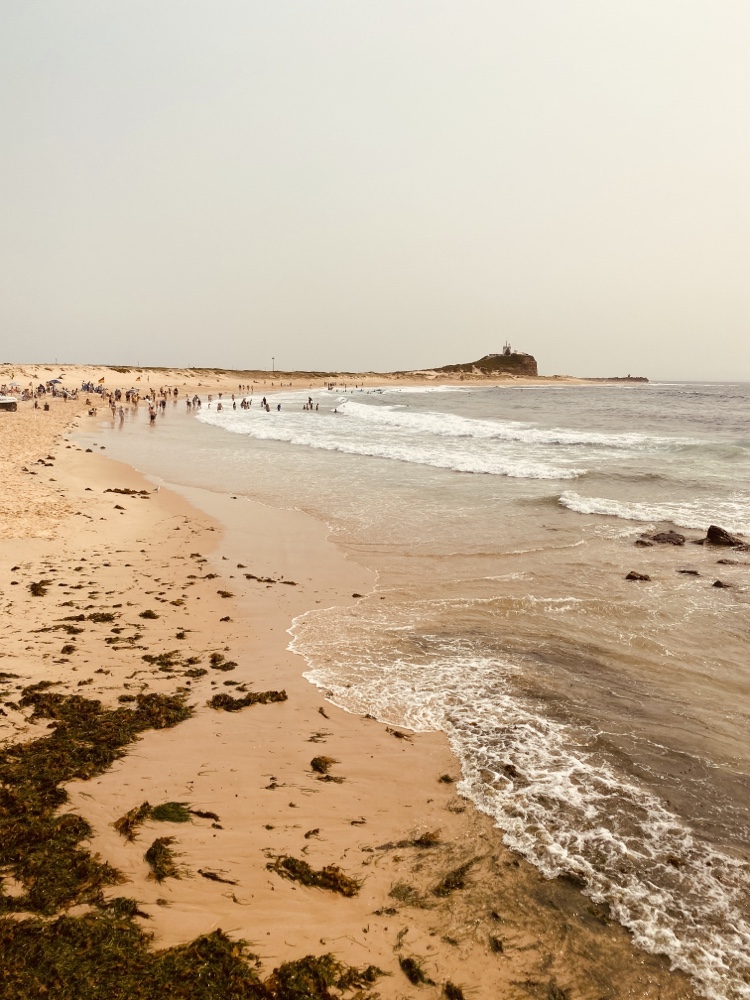
I went for a big long walk today along the beaches, and I thought many things. One of those things – and it’s something I’ve thought before – was just how many sand grains are actually on this beach?
Let’s work it out.

That’s Newcastle beach. It’s gently curved, 650 meters long and as best I can estimate using satellite photos, has about 140 feet (~42.7 metres) of sand width. Estimating the depth of the sand is difficult, so I’ll go with a likely conservative average of 2 metres.

Doing the math gives a volume of sand of approximately 55,500 cubic metres. However all this volume isn’t occupied with sand, since there’s gaps between the grains. To work out the actual volume of sand the packing constant (ie what percent of the volume is the media of interest) is needed.
This is difficult to calculate. In fact it’s very difficult since the grains are of varying size and shape. So as an estimate I’ll assume they are spheres (they’re not) and that the sand is mostly settled which gives a value of about 74%
So that gives us about 41,000 cubic metres of sand grains.

Now to calculate how many discrete grains. Once again approximations are needed. The sand on Newcastle beach is very fine but not silt-like, so we’ll use the industrial classification of ‘fine sand’ and treat each grain as a cube with sides 0.25 millimetres.
Diving the total volume by the volume of a single grain gives us a final answer: I estimate there are at least 2.624 quadrillion grains of sand in Newcastle Beach.

To put that into perspective, that’s about 340,000 grains for everyone on Earth, which would fill a volume about as big as a golf ball. So yes, everyone on earth could easily take a handful of sand from just Newcastle Beach without it running out. In fact there’d likely be a lot left over since I probably overestimated sand grain and underestimated depth.
And that’s just one beach. Australia has over 10,000 of them 🙂
(Thanks AW for the title pun…)
An unexpected physics lesson! Almost as unexpected as that time Nat…